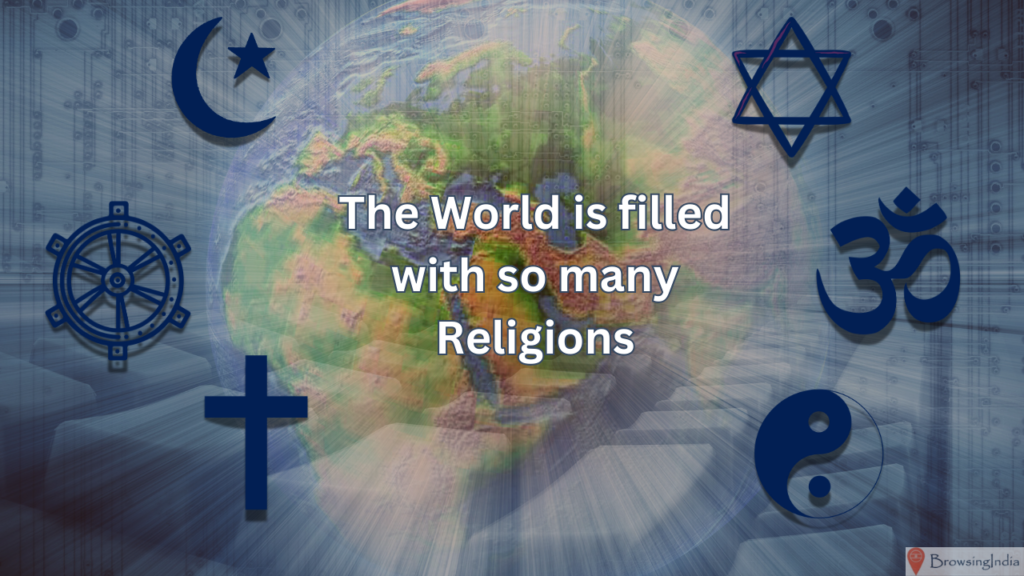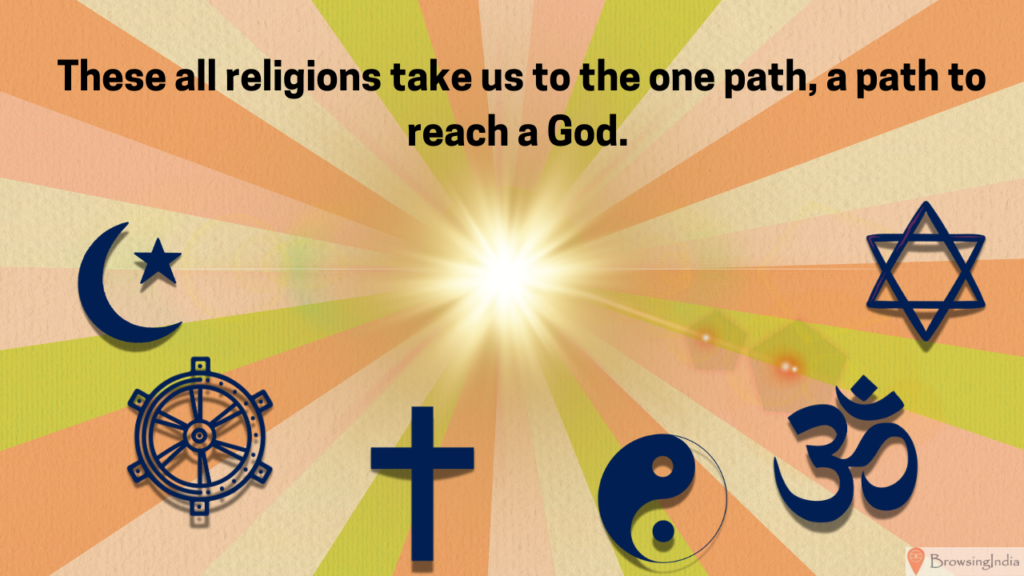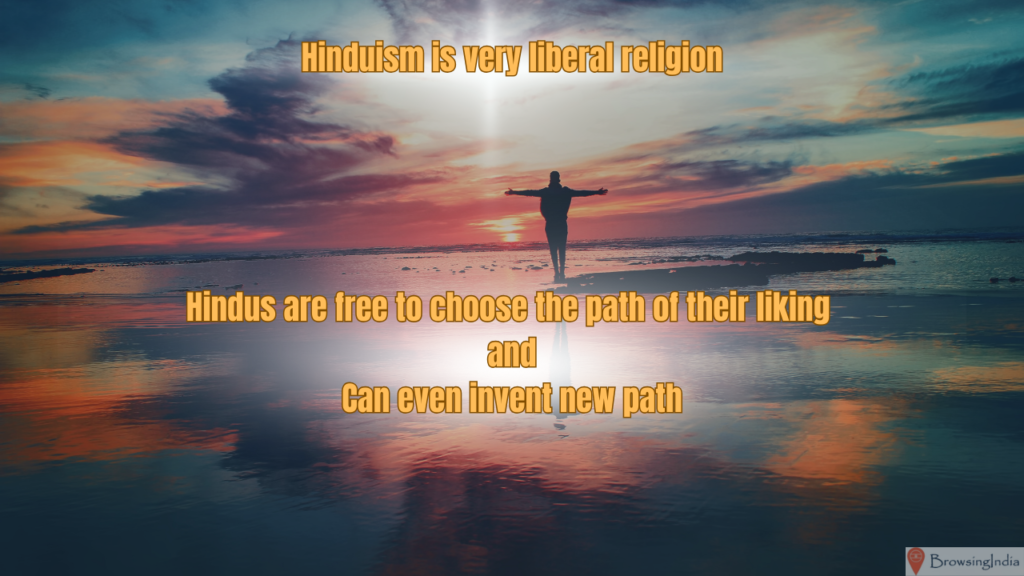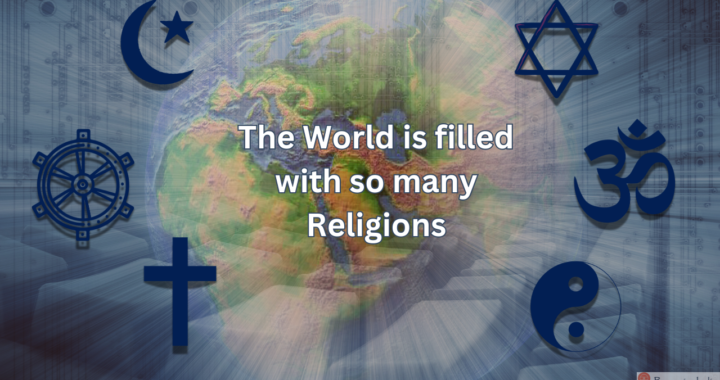The world is filled with so many religions, within one religion there are many beliefs. What we follow is something we get from the plains of our own civilization and culture. All these religions take us to the one path, a path to reach a God.

Why so many Religions?
But the thing that dwells in our mind is Why so many religions? Why can’t we follow the one path? If we were to reach one destination then why so many differences in path. To answer that let’s make an example of sweet, Many people like it a lot, many don’t like it all and some will just taste it.
So, every person does not have the same liking and thus cannot have the same beliefs, to suit these different aspirations, times, and countries many religions came to exist. But we have to remember that these all religions are like different paths to climb the same mountain. One can realize God only if he follows his chosen path with whole-hearted devotion.
GOD is ONE

To claim that, realizing God is the monopoly of any one religion is like claiming that God can be found in this room but not the next, only one way to climb the mountain. Those who circle the mountain, trying to bring others around to their paths, are not climbing.
In ancient Indian literature, Vedas announced Hinduism’s classic contention that the various religions are like different languages through which God speaks to the human heart. “Truth is one; sages call it by different names.”
Different Paths in Hinduism

Most of religion has only one path described, whereas Hinduism is like a vast ocean of different beliefs. There are several paths described to reach the one God.
The center thought of Hinduism is that every living being including humans is a composition of two entities – body (शरीर) and Atma-आत्मा. It describes the universe as the body of God and the Spirit of God as Parmatma (परमात्मा).
Hinduism prescribes every human being to make a spiritual endeavor to achieve redemption from the reincarnation cycle and assimilate his soul(atma) with God (Paramatma). This process is called Moksha (मोक्ष).
There are several methods to attain Moksha. These methods are collectively called Yoga (योग, literal meaning- addition: process of adding or merging your soul with the Supreme Soul – God).
There are four types of Yoga,
1. Jnana Yoga(ज्ञान योग- acquiring knowledge, wisdom and self-contemplation)
Jnana yoga focuses on the knowledge and introspection to acquire Moksha. Jnana in Sanskrit means knowledge or wisdom. A person following the jnana yoga asks himself who am I? Or What am I? And pursue the knowledge of Vedas and Upanishads to understand the relation between the soul and the Supreme soul. This method requires the guidance of the Guru, to remain focused on the aim and not get lost in the ocean of knowledge and get confused with the interpretation of the scriptures.
2. Karma yog (कर्म योग- performing one’s duties against all the hurdles and temptations)
According to Krishna in the Bhagavad Gita, Karma yoga is the spiritual practice of “selfless action performed for the benefit of others”. Karma yoga is a path to reach moksha(spiritual liberation) through work. It is a rightful action without being attached to fruits or being manipulated by what the results might be.
3. Bhakti Yoga (भक्ति योग-devoting oneself to worship and love of God)
According to Hinduism belief, God is one and this Universe is integral to Him. The different Gods worshipped in Hinduism are personifications of the Supreme Soul (Parmatma) in different ‘modes of consciousness’ called Chetana (चेतना). A person following Bhakti Yoga devotes himself to a personification of God that matches his own consciousness and worships Him with utmost compassion to attain Moksha.
In Bhakti yoga people worship so many different gods like Vishnu, Shiva, Krishna, Rama, Devi, and so many more.. Puranas tells us so many different stories about the unification of these different gods. It says you can worship any God according to your liking but in the end, you will realize the ultimate truth.
4. Raja Yoga (राजयोग – Mediatate upon God)
Raja yoga mainly focus on the meditation. It teaches to control over mind and body control. It works on all three existence physical, mental and spiritual and teaches practitioner to achieve balance and harmony on all of these levels.
The hatha Yog and the Asanas famous in current time are the part of the Raja yoga. Swami Vivekanada associate it with Mmaharhsi Patanjali’s Yoga Sutra.
Raja yoga start from the Physical level and then takes us towards the Spiritual level.
Hindus are free to choose

One can follow any of these or all of these paths to connect with God. Hinduism is a liberal religion and also allows oneself to invent his own path to connect with God and finally merge with Him.
Conclusion
The same idea is expressed in the “Sivamahimna-stotra”. This hymn glorifying Siva is by Pushpadanta. The hymn says:
“Trayi (the three Vedas), Sankhya(philosophical inquiry), yoga, the Pasupata system, Vaisnavism- people follow any of them according to their different dispositions. Like the rivers merging in the ocean all these paths have one meeting point, the Paramatman. ”

